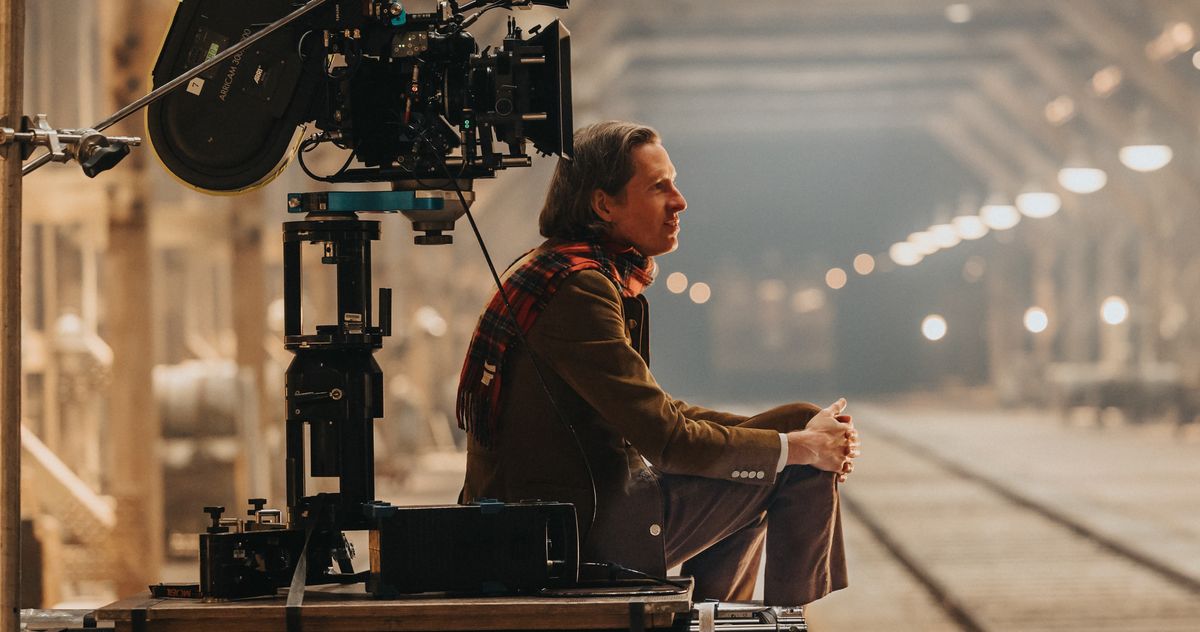Exploring The Underlying Darkness In Wes Anderson's Films

Welcome to your ultimate source for breaking news, trending updates, and in-depth stories from around the world. Whether it's politics, technology, entertainment, sports, or lifestyle, we bring you real-time updates that keep you informed and ahead of the curve.
Our team works tirelessly to ensure you never miss a moment. From the latest developments in global events to the most talked-about topics on social media, our news platform is designed to deliver accurate and timely information, all in one place.
Stay in the know and join thousands of readers who trust us for reliable, up-to-date content. Explore our expertly curated articles and dive deeper into the stories that matter to you. Visit Best Website now and be part of the conversation. Don't miss out on the headlines that shape our world!
Table of Contents
Exploring the Underlying Darkness in Wes Anderson's Whimsical Worlds
Wes Anderson. The name conjures images of meticulously crafted symmetrical shots, pastel palettes, and quirky characters. His films are instantly recognizable, celebrated for their visual style and eccentric charm. But beneath the surface of the whimsical narratives and meticulously designed sets lies a current of darkness, a melancholic undertow that resonates deeply with audiences. This exploration delves into the surprisingly somber themes consistently woven into Anderson's seemingly lighthearted cinematic universe.
Beyond the Pastel Perfection: Themes of Loss and Isolation
While Anderson's films are often described as "quirky" or "whimsical," a closer examination reveals recurring themes of loss, grief, and profound isolation. Characters frequently grapple with absent or estranged parents, failed relationships, and a pervasive sense of displacement. The meticulously constructed worlds, while visually stunning, often serve as a backdrop to characters struggling with deeply personal and often painful experiences.
-
The Royal Tenenbaums: This quintessential Anderson film showcases the fractured family dynamic, with each Tenenbaum child wrestling with their own demons and the legacy of a dysfunctional family. The film’s poignant exploration of familial dysfunction and the lasting impact of childhood trauma is far from lighthearted.
-
Moonrise Kingdom: The seemingly idyllic setting of this coming-of-age story masks the underlying anxieties of young love, parental neglect, and the looming shadow of societal expectations. The children's escape is both a romantic adventure and a desperate attempt to find solace from the adult world's complexities.
Death and Mortality: A Constant Presence
Death is not a taboo subject in Anderson's films; it's a recurring motif, often subtly integrated into the narrative. From the lingering presence of loss in The Royal Tenenbaums to the more overt exploration of mortality in The Grand Budapest Hotel, the fragility of life is a persistent undercurrent. This isn't gratuitous; it adds depth and complexity, grounding the fantastical elements in a relatable human experience.
The Importance of Nostalgia and Memory
Anderson’s films frequently employ nostalgia as a narrative device. The meticulous attention to detail, the vintage aesthetics, and the recurring use of specific musical scores all contribute to a sense of longing for a bygone era. This nostalgia, however, is often tinged with sadness, a melancholic reflection on the passage of time and the irretrievable nature of the past. This sense of wistful remembrance adds another layer of depth to the emotional landscape of his films.
A Style That Mirrors the Subtext:
Even Anderson's signature visual style contributes to the underlying darkness. The symmetrical compositions, while aesthetically pleasing, can also feel isolating and rigid, reflecting the characters' internal struggles and their inability to fully connect with others. The often-stark color palettes, despite their vibrancy, can evoke a sense of coldness and detachment.
Conclusion: Finding Depth in the Whimsy
While Wes Anderson's films are undeniably visually stunning and comedically charming, a deeper look reveals a complex tapestry of human emotion. The underlying darkness, far from detracting from the films' appeal, adds a layer of poignancy and resonance, reminding us that even in the most meticulously crafted worlds, the human experience is multifaceted and deeply complex. Understanding this underlying darkness enhances the appreciation of the artistry and emotional depth embedded within each film. What are your thoughts on the darker themes in Wes Anderson's filmography? Share your opinions in the comments below!

Thank you for visiting our website, your trusted source for the latest updates and in-depth coverage on Exploring The Underlying Darkness In Wes Anderson's Films. We're committed to keeping you informed with timely and accurate information to meet your curiosity and needs.
If you have any questions, suggestions, or feedback, we'd love to hear from you. Your insights are valuable to us and help us improve to serve you better. Feel free to reach out through our contact page.
Don't forget to bookmark our website and check back regularly for the latest headlines and trending topics. See you next time, and thank you for being part of our growing community!
Featured Posts
-
 Company Funding Of State Officials Rome Trip Ethical Implications
May 17, 2025
Company Funding Of State Officials Rome Trip Ethical Implications
May 17, 2025 -
 Vulnerable Benefit Claimants Need Better Protection Mps Demand System Overhaul
May 17, 2025
Vulnerable Benefit Claimants Need Better Protection Mps Demand System Overhaul
May 17, 2025 -
 Seven Startling Stats Dominating Mlbs Second Quarter
May 17, 2025
Seven Startling Stats Dominating Mlbs Second Quarter
May 17, 2025 -
 La 28 Olympics Air Taxis Replace Cars Offering Uber Priced Rides
May 17, 2025
La 28 Olympics Air Taxis Replace Cars Offering Uber Priced Rides
May 17, 2025 -
 Justin Wrobleskis Return To Dodgers Impact On Starting Rotation
May 17, 2025
Justin Wrobleskis Return To Dodgers Impact On Starting Rotation
May 17, 2025
Latest Posts
-
 The Impact Of A Weakening Ocean Current System On Us Sea Levels
May 18, 2025
The Impact Of A Weakening Ocean Current System On Us Sea Levels
May 18, 2025 -
 Subway Series Villains The All Time Worst Mets And Yankees Players
May 18, 2025
Subway Series Villains The All Time Worst Mets And Yankees Players
May 18, 2025 -
 Ukraine War Australian Receives 13 Year Prison Term In Russia
May 18, 2025
Ukraine War Australian Receives 13 Year Prison Term In Russia
May 18, 2025 -
 Istanbul Da Yagis Trafik Ve Ulasim Etkileri
May 18, 2025
Istanbul Da Yagis Trafik Ve Ulasim Etkileri
May 18, 2025 -
 Tom Cruise And Ana De Armas In Talks For Jon Chu Film
May 18, 2025
Tom Cruise And Ana De Armas In Talks For Jon Chu Film
May 18, 2025
